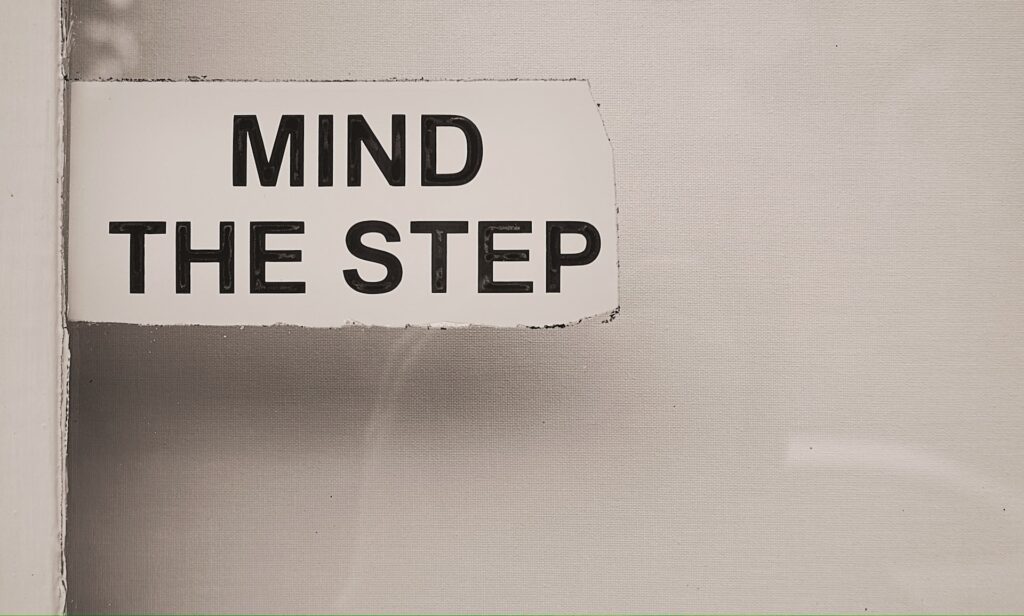ABC工事とビル投資戦略 – ABC construction work and Building strategy.
About ABC construction work. ABC工事の種別や内容については前回の投稿で説明しましたが、本記事では、ABC工事とビルの投資戦略について書きます。これは主に、原状回復工事と、ビルのグレードアップ工事に関わるものです。
テナントとオーナーが賃貸借契約を締結する際に、その貸室の「貸方」(「貸方基準」とも言います)が明示されます。貸方の内容は、内装の使用材料(壁紙、塗装、フローリング、カーペット等)、設備の構成(空調設備、電気設備、給排水設備等)、天井高さ、広さ、扉位置、段差の有無など、主として貸室の利用に関係の深いものになります。明示の方法は、リストや図面、写真であったりします。
大切なのは「貸方」は、原則的に原状回復工事の仕様となるという点です。理想論だけ言えば、貸室返却の際には、借りた時と全く等しい状態で帰ってくれば、それ以上の事はありません。テナントは原状回復義務を完全に履行した事になりますし、オーナーはそのまま(何の工事もせずに)、次のテナントに貸すことが出来ます。
一方、原状回復工事は、B工事(テナント発注、オーナー指定の施工会社)またはC工事(テナント発注、テナント任意の施工会社)になりますので、賃貸借契約上B工事としている場合は、ある程度建物の性質・性格を熟知している会社が施工しますので、さほど心配は無いのですが、C工事で良いとしている場合は、原状回復工事の品質について、オーナー側で十分に確認する必要があります。というのも、仮に初見の施工会社が原状回復工事を担当したとして、必ずしも原状の(契約時の)品質に(技術的に)回復出来るとは限らないからです。
良くあるケースとして、テナントと付き合いの深い施工会社、もしくはテナントと同グループの施工会社によって原状回復工事を実施し、所定の品質を充足しないまま引き渡しをしてしまう(せざるを得ない)事があります。オーナー側に立てば、やり直しをしてでも一定の品質水準に回復して欲しいのが本音ですが、一方で次のリーシングに力を入れたい、時間の制約がある等の事情により、そこそこでの原状回復に目を瞑ってしまうといった事が発生します。
テナント側に立てば、やることはやりました、という気持ちもあるかも知れません。この問題の根底には、賃貸借契約書に貸方基準や原状回復条項が適切に謳われていない事があります。
賃貸借契約での技術的チェック事項 – What to check on leasing contract.
- 貸方基準が明記されている(内装仕様、設備仕様、平面、断面等)
- 原状回復条項が明記されている
- 工事区分が明記されている
賃貸借契約を締結する際には、面倒でも上記が確りと網羅されているか、技術目線での確認が必要です。
曖昧な部分を曖昧に済まされてしまっても、テナントに対抗する術が無いからです。
資産には継続性があります。ただ、一定水準で継続する訳ではなく、経年により、緩やかな下り坂を描きながら継続していきます。賃貸借契約の締結方法を誤れば、この下り坂に、断崖が発生する事もあり得ます。そして、断崖の直下から、また下り坂が続くことになるのです。
B工事指定の重要性 – Importance of B construction designation
ビルの根幹を成すエレベータや水槽、消防設備などの共用設備であったり、外壁、外構、屋上部分などは通常A工事区分になります(テナントが触れない部分です)。資産としてはオーナーですが、テナントには利用権が与えられる形となります。賃貸借契約上問題となる点があるとすれば、A資産をテナントが損傷した場合になります。テナント理由によってエレベータのかごに傷が付いたなどの場合は、修理費用はテナント持ちとなりますが、エレベーターがオーナー資産である事に変わりはありません。これについては異論を唱えられるケースはほぼ無いと思います。
B工事については一番扱いが難しい部分です。オーナー側で、テナントが触れる部分のリスクをどこまで先読み出来るかが、指定するかしないかの分岐点になります。安全側を考えれば、B工事指定しておくのが一つの手ですが、テナント側からすれば、工事金額がどうしても上振れしてしまう点があり、契約時に明確になっていれば良いですが、退去時になって付き合いのある工事会社に依頼したいと、揉めるケースも少なくありません。揉めるだけであればまだしも、C工事会社が誤ってオーナー資産に、もしくはビル全体設備に影響を及ぼすような損害を発生させてしまった場合、最悪は(求められる品質での)復旧が不可能という自体にもなりかねません。
このようなケースを予め具体的に想定する事は難しいですが、可能性の有無を考える事は出来ますので、ビルオーナーは自ら考える、もしくは頼れる技術者やプロジェクトマネージャーに依頼するといった事が、転ばぬ先の杖になります。賃貸借契約書は必要な添付書類を伴っているかという点に加え、オーナー、テナントが「互いに」最終的なリスクを回避出来る内容となっているかがポイントとなります。なぜなら、テナントのリスクはオーナーのリスクでもあるからです。

ABC construction and Building strategy.
The types and details of ABC work were explained in the previous post, and in this article we will write about ABC work and building investment strategies. This mainly concerns restoration work and building upgrade work.
When a tenant and owner enter into a lease agreement, the “rental” (also known as “rental basis”) of the rental unit is specified. The contents of the “rental method” are mainly related to the use of the rental room, such as interior materials (wallpaper, paint, flooring, carpeting, etc.), facility configuration (air conditioning, electrical, plumbing, etc.), ceiling height, size, door position, and whether there are steps or not. The method of clarification may be by lists, drawings, or photographs.
The important point is that the “rental side” is, in principle, the specification of the restoration work. Ideally, nothing more than if the rental unit is returned in exactly the same condition as when it was rented. The tenant has completely fulfilled his/her obligation to restore the room to its original condition, and the owner can rent the room to the next tenant as is (without any work).
On the other hand, the restoration work will be either B work (ordered by the tenant, construction company designated by the owner) or C work (ordered by the tenant, construction company of the tenant’s choice). However, if the lease agreement stipulates that C work is acceptable, the owner must fully confirm the quality of the restoration work. This is because, even if a first-time construction company takes charge of the restoration work, it may not always be possible to restore (technically) to the original quality (at the time of the contract).
In some cases, a construction company that has a close relationship with the tenant or a construction company in the same group as the tenant performs the restoration work, and the property is handed over (or forced to hand over) without satisfying the required quality. From the owner’s point of view, they would like the restoration work to be completed to a certain level of quality, even if they have to redo the work, but on the other hand, they want to focus on the next leasing process or have time constraints, etc., which may lead to a situation where the restoration work is not as good as expected.
On the tenant’s side, there may be a feeling that they have done what they had to do. The root of this problem lies in the fact that the lease agreement does not properly stipulate the rental standard and the restoration clause.
What to check on leasing contract.
- Lending standards are clearly stated (interior specifications, equipment specifications, floor plan, cross section, etc.)
- Restoration clause is clearly stated.
- Construction category is clearly stated.
When concluding a lease agreement, it is necessary to confirm from a technical point of view that the above items are covered, even if it is troublesome.
If the tenant is left with ambiguous information, there is no way to fight the tenant.
Assets have continuity. However, it does not continue at a constant level, but rather, it will continue with a gradual downward slope over time. If the lease agreement is not executed correctly, this downhill slope can lead to a precipice. And from directly under the cliff, the descent will continue.
Importance of B construction designation
Common facilities such as elevators, water tanks, and firefighting equipment that form the foundation of the building, as well as exterior walls, exterior structures, and rooftop areas, are usually classified as “A” construction (i.e., areas that tenants do not touch). The owner owns the property, but the tenant has the right to use the property. The only problem with the lease agreement is if the tenant damages the A asset. If the elevator is damaged by the tenant, the tenant will be responsible for the repair cost, but the elevator is still the owner’s asset. However, the elevator is still an owner’s asset and there are almost no cases where this is disputed.
B. Construction is the most difficult part to handle. The decision to specify or not to specify is based on the extent to which the owner can anticipate the risks of the part that tenants will be exposed to. However, from the tenant’s point of view, there is a point where the construction cost will inevitably rise, and although it is good if this is made clear at the time of contract, there are not a few cases where tenants get into trouble when they move out and want to request a construction company they have a relationship with to do the work. If it is only a dispute, but the C-construction company accidentally causes damage that affects the owner’s assets or the entire building’s facilities, the worst that can happen is that restoration (with the required quality) may be impossible.
It is difficult to envision such a case in advance, but it is possible to consider the possibility. In addition to the lease agreement being accompanied by the necessary supporting documents, the key point is that the lease agreement should be written in such a way that both the owner and the tenant can “mutually” avoid the ultimate risk. This is because the tenant’s risk is also the owner’s risk.
- AM/PM/BM/LM/FM/CM
- 工事区分について – Construction Classification
- About Long-term Repair Plan – 長期修繕計画
- 収支計算の際に大切なこと
- グレードアップについて – About Upgrades
